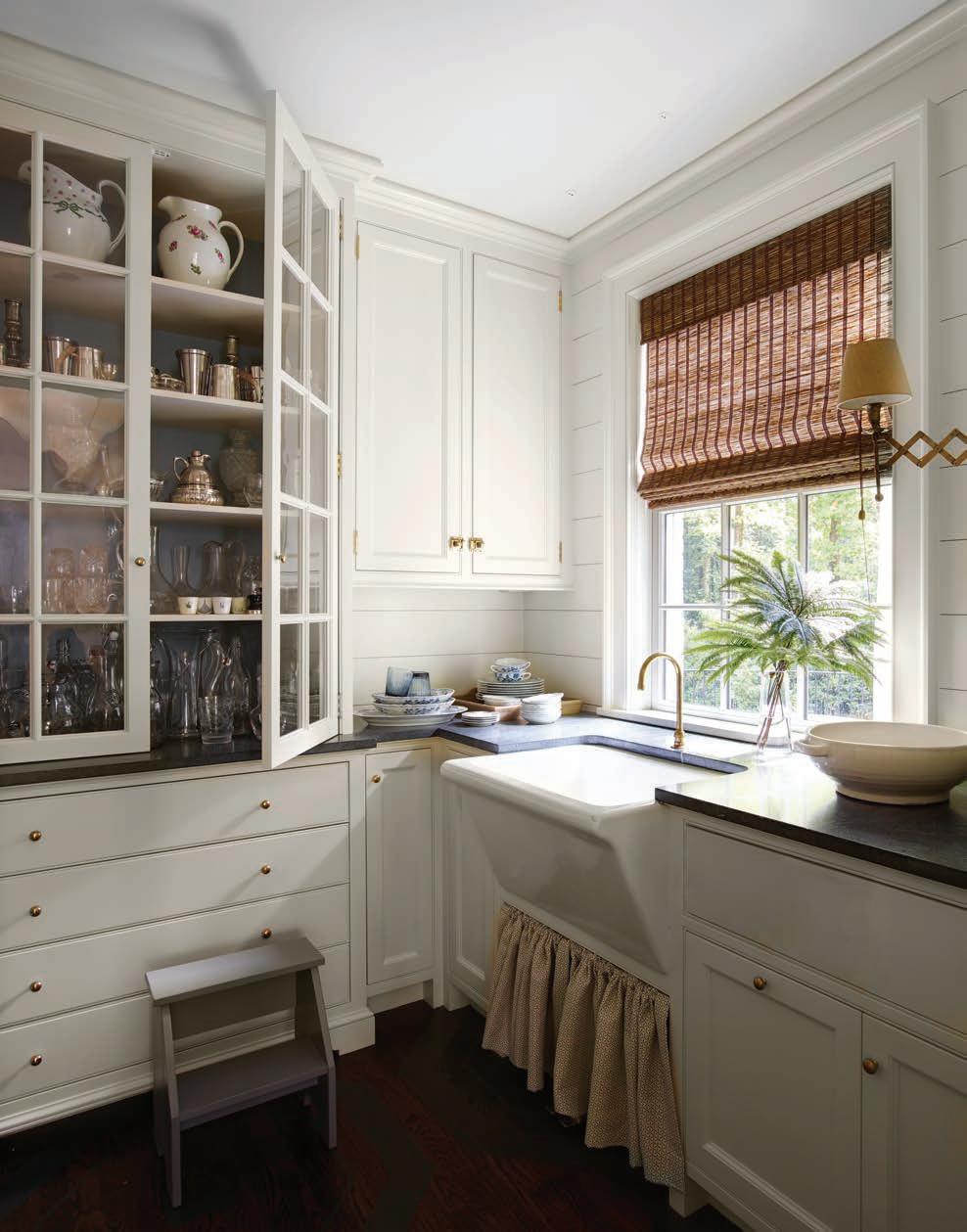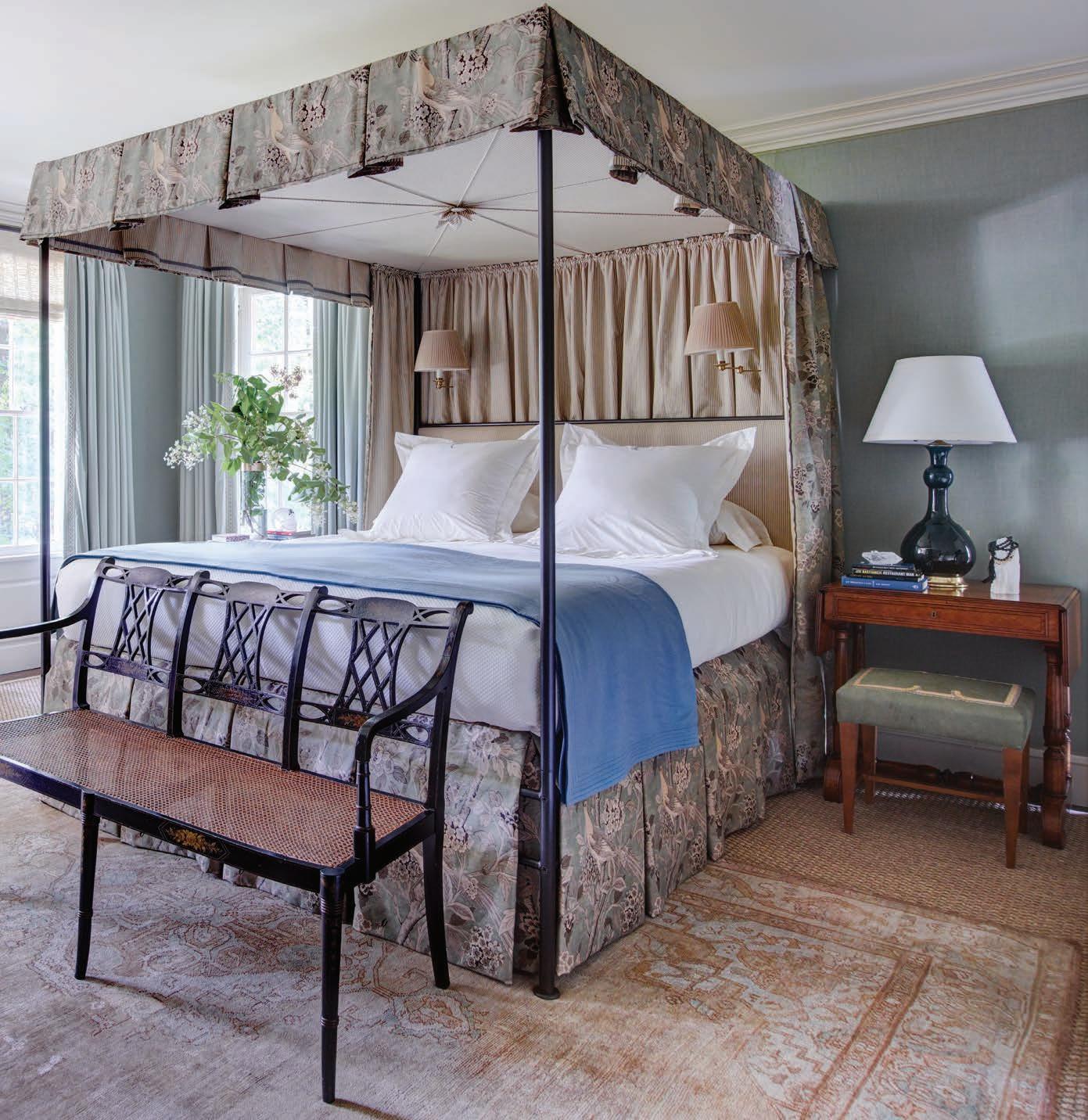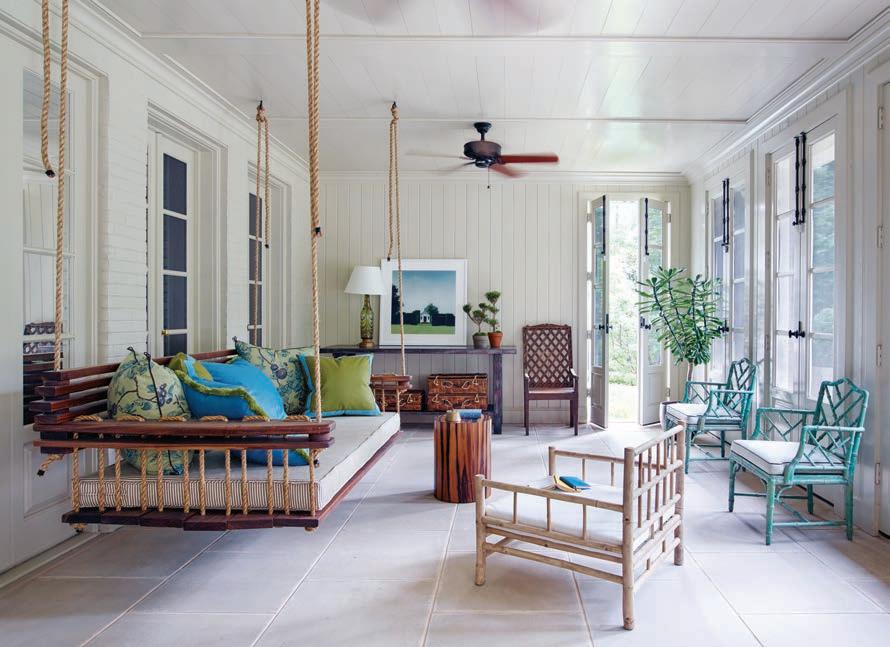
3 minute read
A Georgian Revival
Interior designer TAMMY CONNOR and architect STAN DIXON combine their passion for classical design to painstakingly restore a 1930s home by Philip Trammell Shutze for a young family of five
Written by Barrett Austin Photographed by Richard Powers


Anchoring the library is an 18th-century chinoiserie screen from Villa Varramista, a 16th-century estate in Tuscany. Set upon an antique Sarouk rug is a George Smith sofa and low armchair, upholstered in Rogers & Goffi gon and Holland & Sherry, respectively. The bookshelves were designed by Connor and Dixon.
A descendent of the late Philip Trammell Shutze, a noted stalwart of European classicism and a devout Italophile, once remarked that Atlanta’s most celebrated architect would have been perfectly happy had he been born during the 18th century. It should seem divinely ordained, then, that an early Atlanta home of his design would be brought back to life under the careful guidance of a young family whose own roots trace back to the Italian region the late architect most adored. That this family would have carte blanche to pull from family homes in Italy, chock-full of 17th- and 18th-century art and museum-worthy furnishings, would no doubt have left Mr. Shutze especially chuffed.
The search for this perfect family home had clear parameters from the outset: a proper classical design, drawn and planned by Shutze. Having grown up living between Europe and her Italian mother’s plantation in South Georgia, the owner had a preternatural appreciation for the sort of classical American architecture inspired by its European antecedents. After viewing five houses designed by Shutze, the family settled on a gracefully proportioned Georgian home set upon 3 acres in Tuxedo Park. Save for an overscale addition that required skillful reworking, the home maintained the spirit of the Shutze’s original vision.
Under the careful direction of Charleston-based Tammy Connor, the designer assembled a team to breathe new life into the home. Working alongside architect Stan Dixon of D. Stanley Dixon Architect and landscape architect John Howard of Howard Design Studio, Connor aimed to provide an elegant yet unstuffy haven for the family of five while making use of sentimental furnishings inherited from the owner’s family.
With a keen focus on maintaining the integrity of Shutze’s original 1930s design, Dixon turned a deft hand at devising what would result in a two-year renovation: Rooms were reconfigured and updated, the attic became a third-floor living area for the children, and the previous addition reworked to more closely reflect the sensitivity of Shutze’s original design. “When you’re lucky enough to work on a house of this caliber, you want to embrace it and learn from it, not go in the opposite direction,” Dixon says.
A sourcing trip to the owner’s ancestral homes in Italy provided Connor with spoils far more meaningful than one could find in the most rarefied antiques store: stacks of ancient vellum books, sanguine and charcoal Italian master drawings adored by the owner’s late mother, and of particular note, a monumental 18th-century chinoiserie screen from a 16th-century Tuscan villa.
“It wasn’t just decorating a house,” Connor says. “It really is a home that has a lot of her family’s pieces from different generations with special connections to her that made it home.”

British artist Banksy’s A System Error Has Occurred hangs above the fi replace, surrounded by the owner’s collection of dog paintings in the living room where all of Shutze’s original millwork remains, including the Georgianstyle broken pediment over the mantel.


The dining room, which features original Georgian-inspired alcove cabinetry by Shutze, is enlivened with a mural by Atlanta-based Ray Goins. The antique French Directoire table is from Karla Katz; the Venetian glass chandelier is from Foxglove Antiques & Galleries.


The kitchen—carefully reworked by Dixon and Connor—now serves as the hub for this family of fi ve. An antique Italian cabinet serves as an island, and a geometric fl oor pattern conceived by Connor lends character to the space. The pendant lights are by Ann Morris.

In the butler’s pantry, a fabric curtain conceals the storage space beneath the reclaimed sink.

A handsome space for his bath and dressing room features Holland & Sherry tweed upholstery on the walls and pecky cypress trim sourced near the family’s farm in South Georgia. The custom brass washstand features black marble and unlacquered brass, and industrial-style exposed plumbing inspired by a similar example found in New York.

Overlooking the garden is a St. Bordeaux soaking tub by The Bath Works, Inc.

The master suite was designed as an evening retreat for the homeowners. A soft celadon cashmere wool fabric by Pollack envelops the room. The iron bed is by David Iatesta and the English Regency bench is from Parc Monceau. The Geisha photograph is from TEW Galleries.

The owner’s collection of 17th- and 18th-century Italian master drawings, prized by several generations of her family, were carefully reframed and hung by Connor. A mid-century Sputnik chandelier from High Style Deco provides modern exuberance.

An English toile by Bennison Fabrics covers the walls and bed. The bespoke embroidery on the wall fabric is by Penn & Fletcher; antiques and artwork are from the homeowner’s own collection.

The attic provides a casual retreat for the three daughters. The practical workspace features a Pottery Barn table and chairs by Land of Nod; Kohler’s Brockway wallmounted sink has a tap for each daughter.

A mix of new and antique furnishings was chosen for practicality and timelessness for the daughters’ bedrooms. The headboard is upholstered in Raoul Textiles; the bed skirt by Chelsea Textiles.

Dixon repurposed the attic to accommodate a guest bedroom as well as a playroom for the daughters. A leaded glass oculus window provides natural light to the space, while giving a view onto the yard.

The rear elevation was carefully reworked by Dixon to maintain a sense of Shutze’s original symmetry, while accommodating changes to what became the third-fl oor living area. Landscape architect John Howard of Howard Design Studio relocated the pool, making it adjacent to the updated pool house, and creating a powerful central axis for the rear of the home.

A casual air emanates from the screen porch. A custom mahogany hanging bed by Arrowhead provides a comfortable space to read or nap.

The pool house was part of a previous addition, which Dixon redesigned to more closely suit the architecture of the main house. A tented ceiling and walls are covered in Kravet. The bottles hanging on the left wall were pulled from a family home in Italy.



